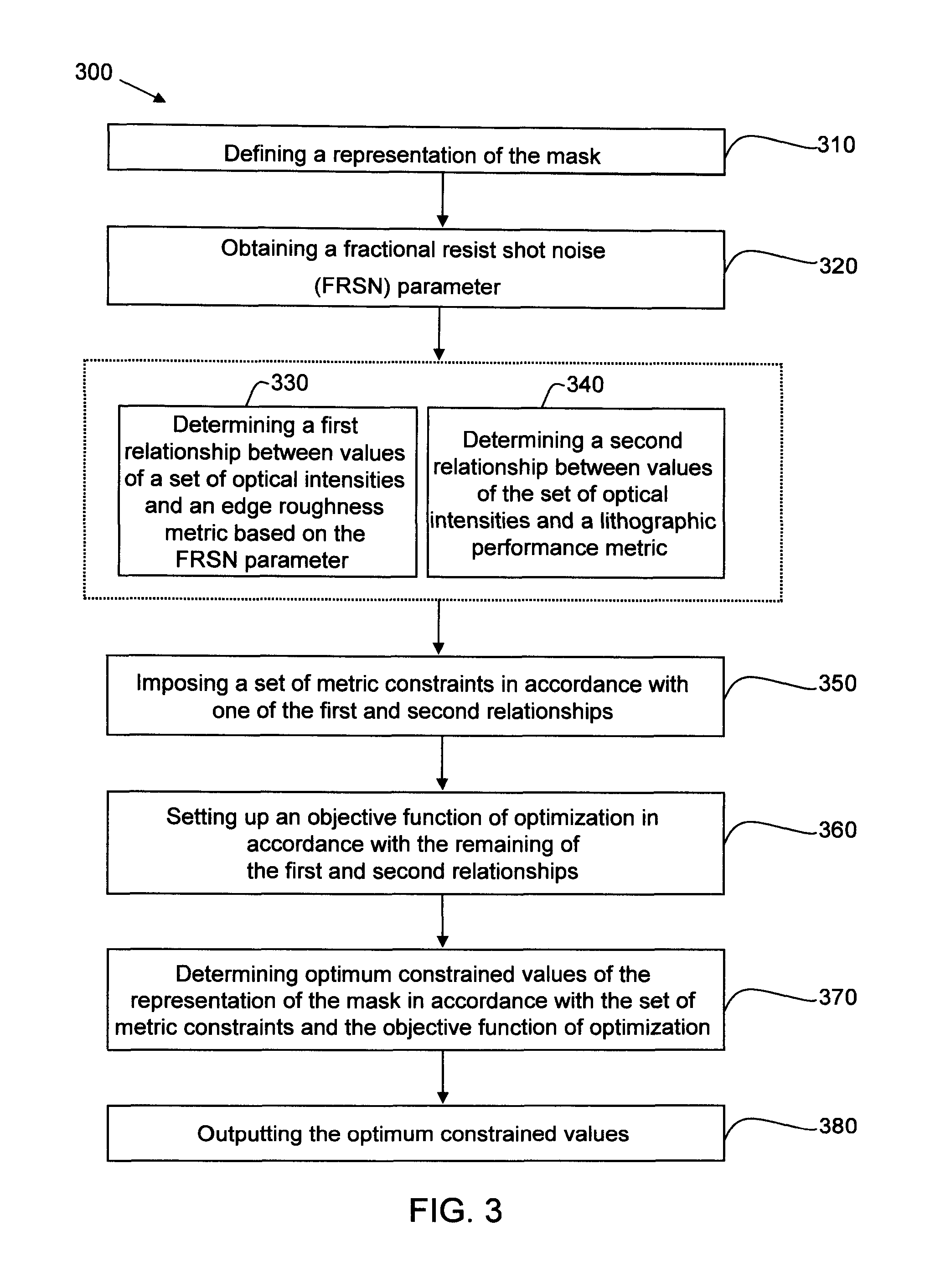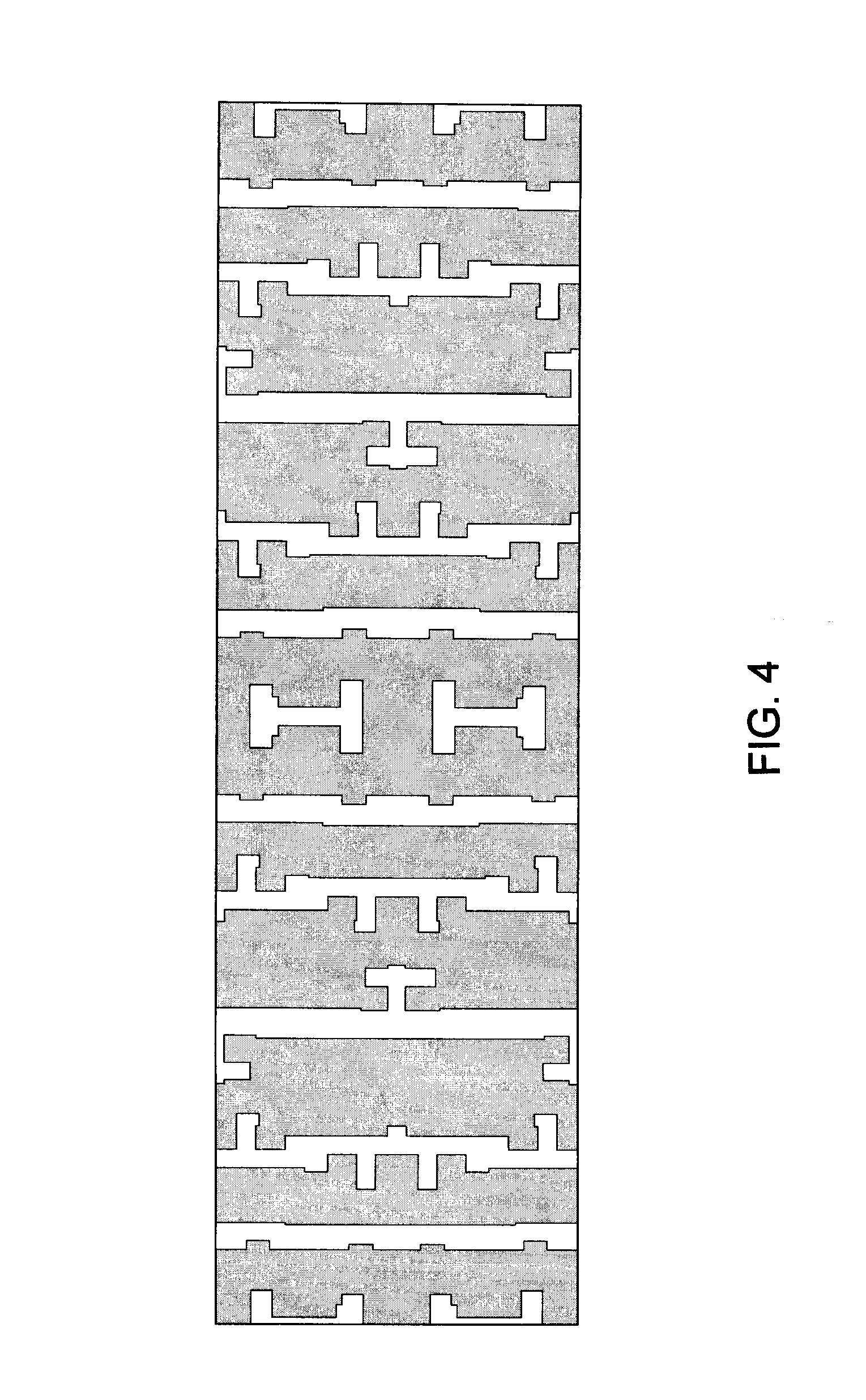Method for optimizing source and mask to control line width roughness and image log slope
a source and mask technology, applied in the field of integrated circuit pattern lithography, can solve the problems of limited resolution of lithographic tools, image distortion becomes a significant problem, and the biasing technique is ineffective to achieve the desired cds of the desired imag
- Summary
- Abstract
- Description
- Claims
- Application Information
AI Technical Summary
Problems solved by technology
Method used
Image
Examples
Embodiment Construction
[0033]The various exemplary embodiments in accordance with this invention provide an improvement over conventional methods to reduce image distortions and improve image fidelity. This is accomplished by combining ways to optimize a lithographic image in a conventional SMO method with a new way of adjusting the image intensity to control LER.
[0034]As used herein, a “source” or an “illumination source” refers to a device configured to emit radiation for the purpose of lithographic exposure.
[0035]As used herein, a “mask” or a “lithography mask” refers to a template used in lithography that allows selective exposure of a photosensitive surface through a patterned layer included therein and having a different transparency than a background layer included therein.
[0036]In a conventional SMO method, the image relationships connect the image with standard lithographic metrics which assess sensitivity to defocus, dose control error, etc. In this method, the image intensity is a smoothly vary...
PUM
| Property | Measurement | Unit |
|---|---|---|
| feature sizes | aaaaa | aaaaa |
| feature sizes | aaaaa | aaaaa |
| length | aaaaa | aaaaa |
Abstract
Description
Claims
Application Information
 Login to view more
Login to view more - R&D Engineer
- R&D Manager
- IP Professional
- Industry Leading Data Capabilities
- Powerful AI technology
- Patent DNA Extraction
Browse by: Latest US Patents, China's latest patents, Technical Efficacy Thesaurus, Application Domain, Technology Topic.
© 2024 PatSnap. All rights reserved.Legal|Privacy policy|Modern Slavery Act Transparency Statement|Sitemap



